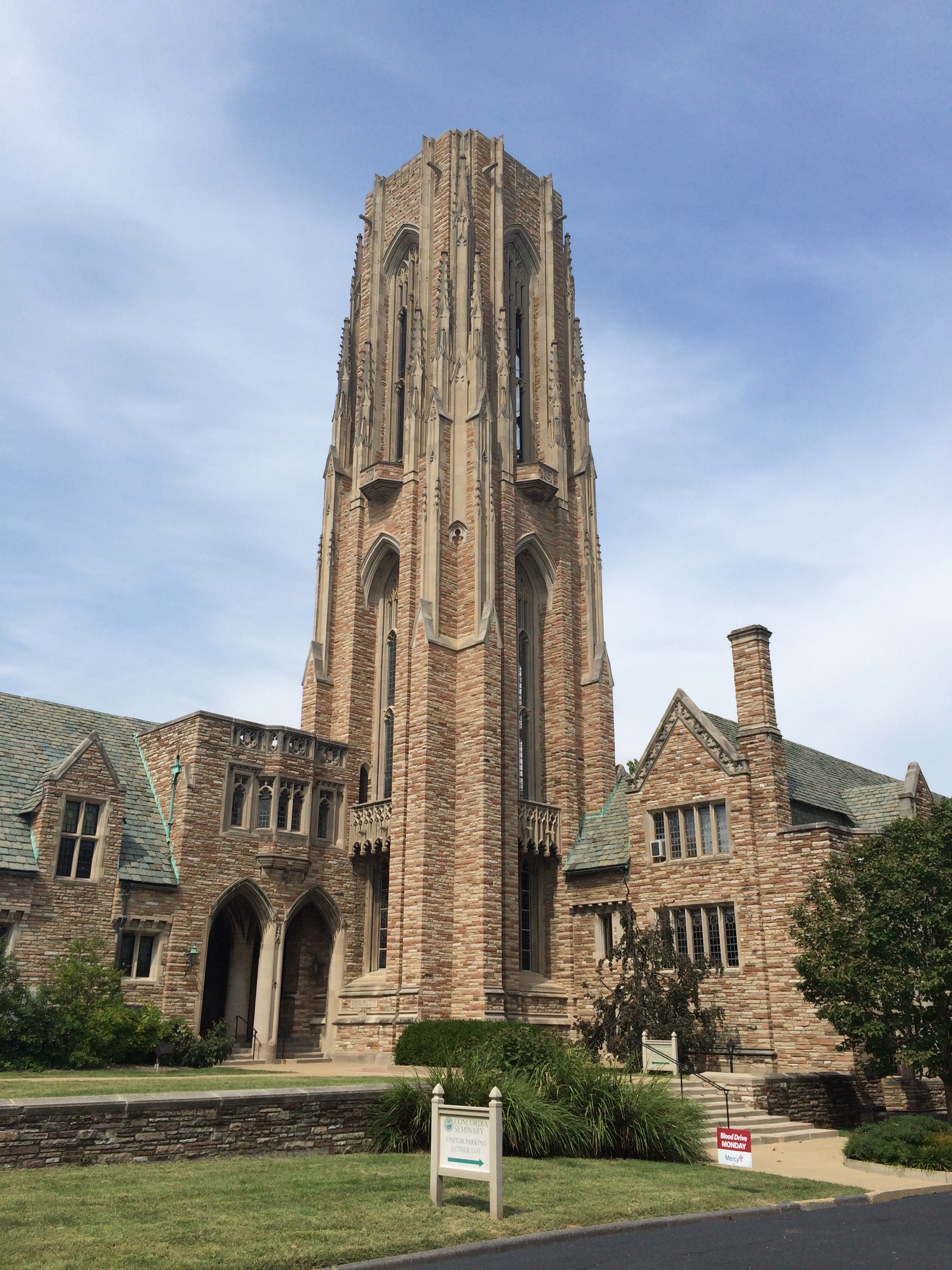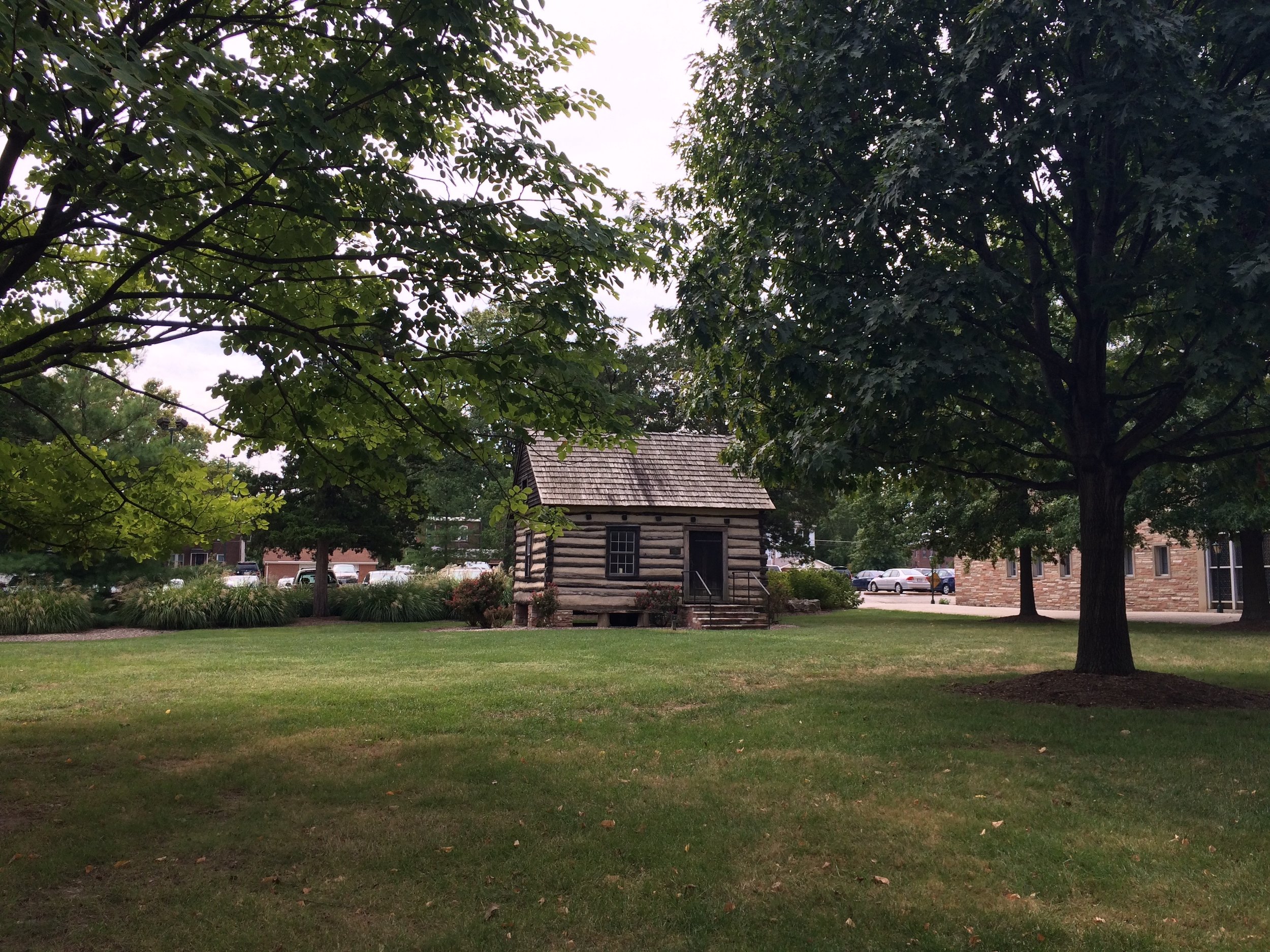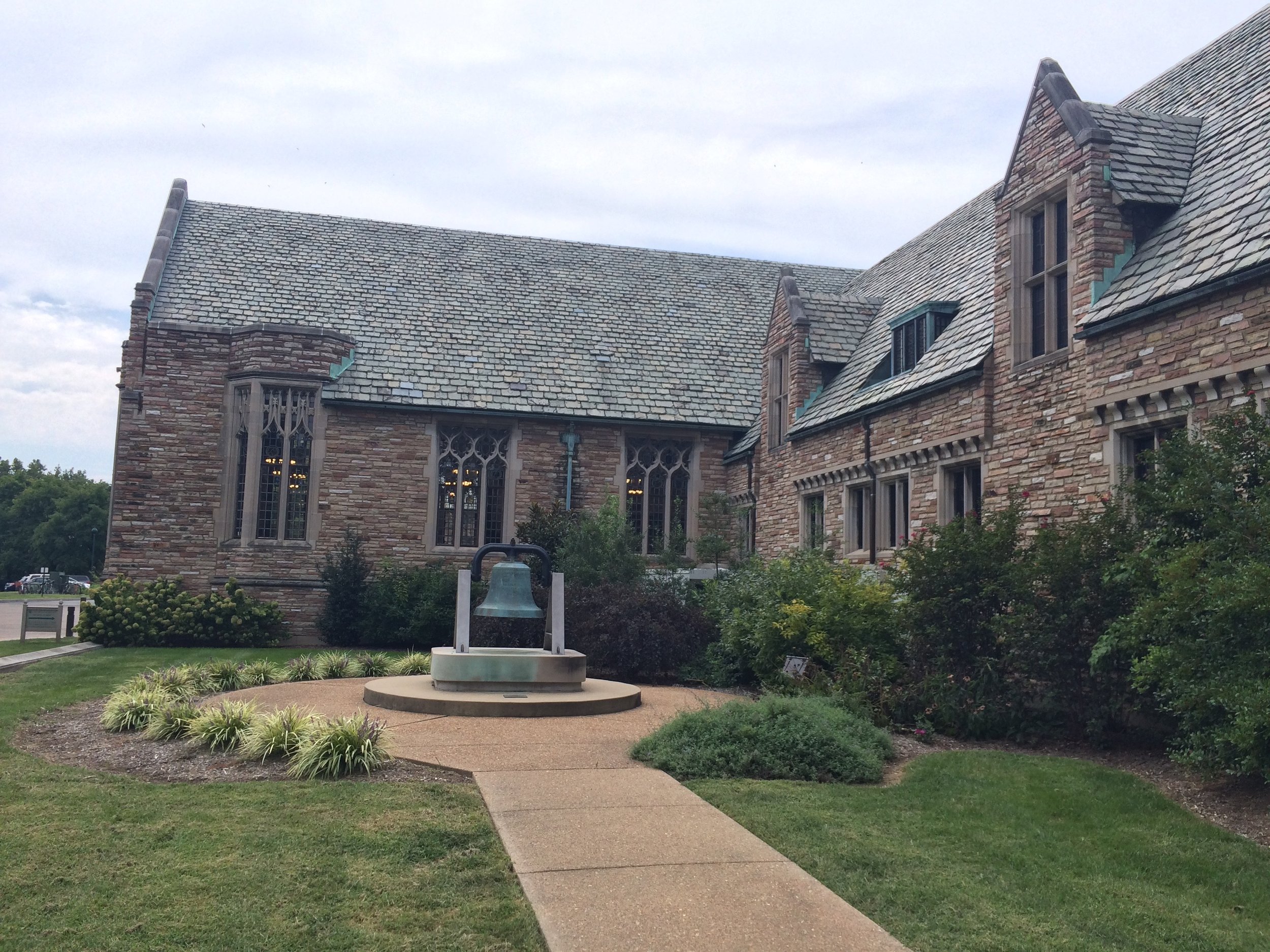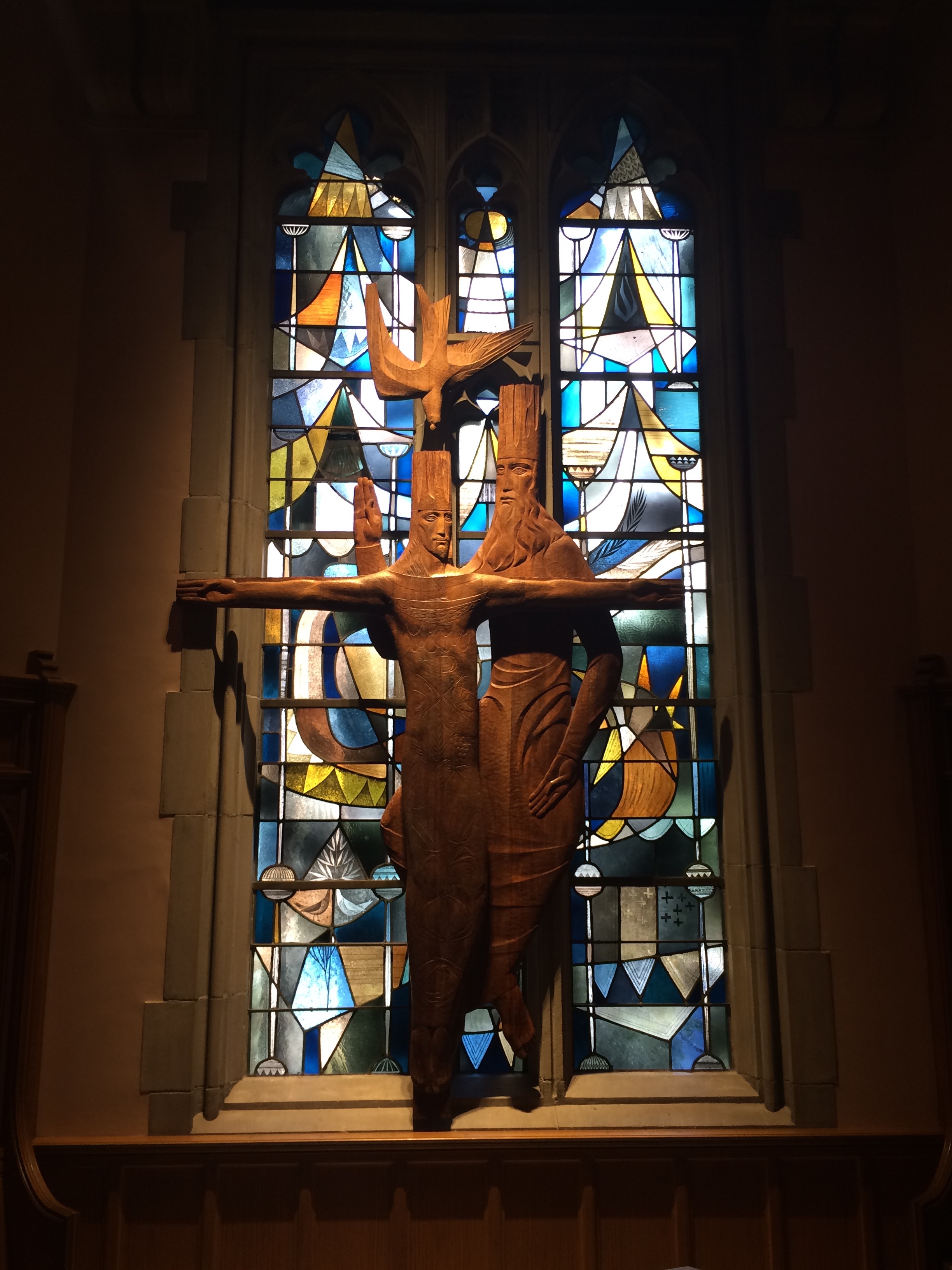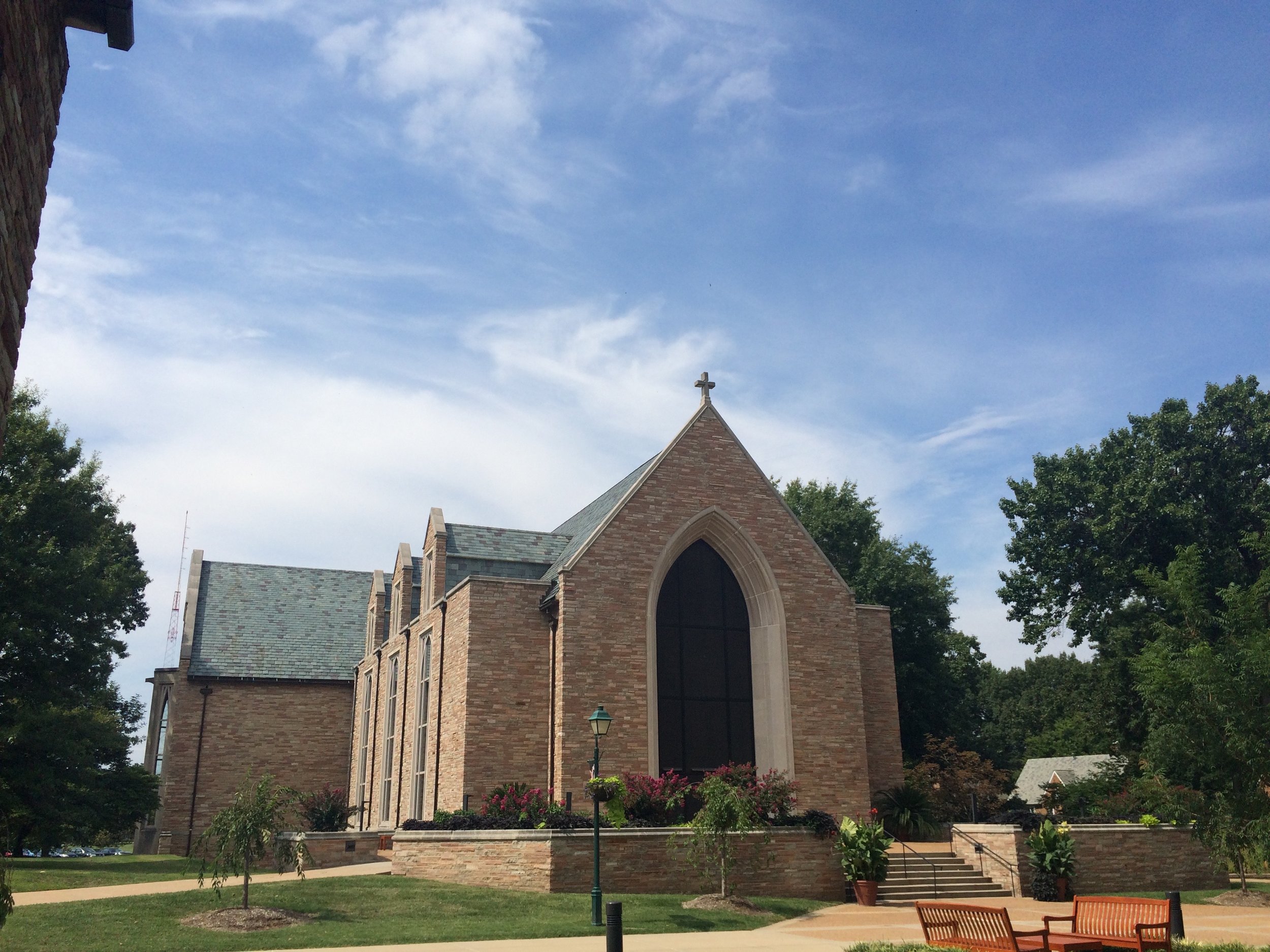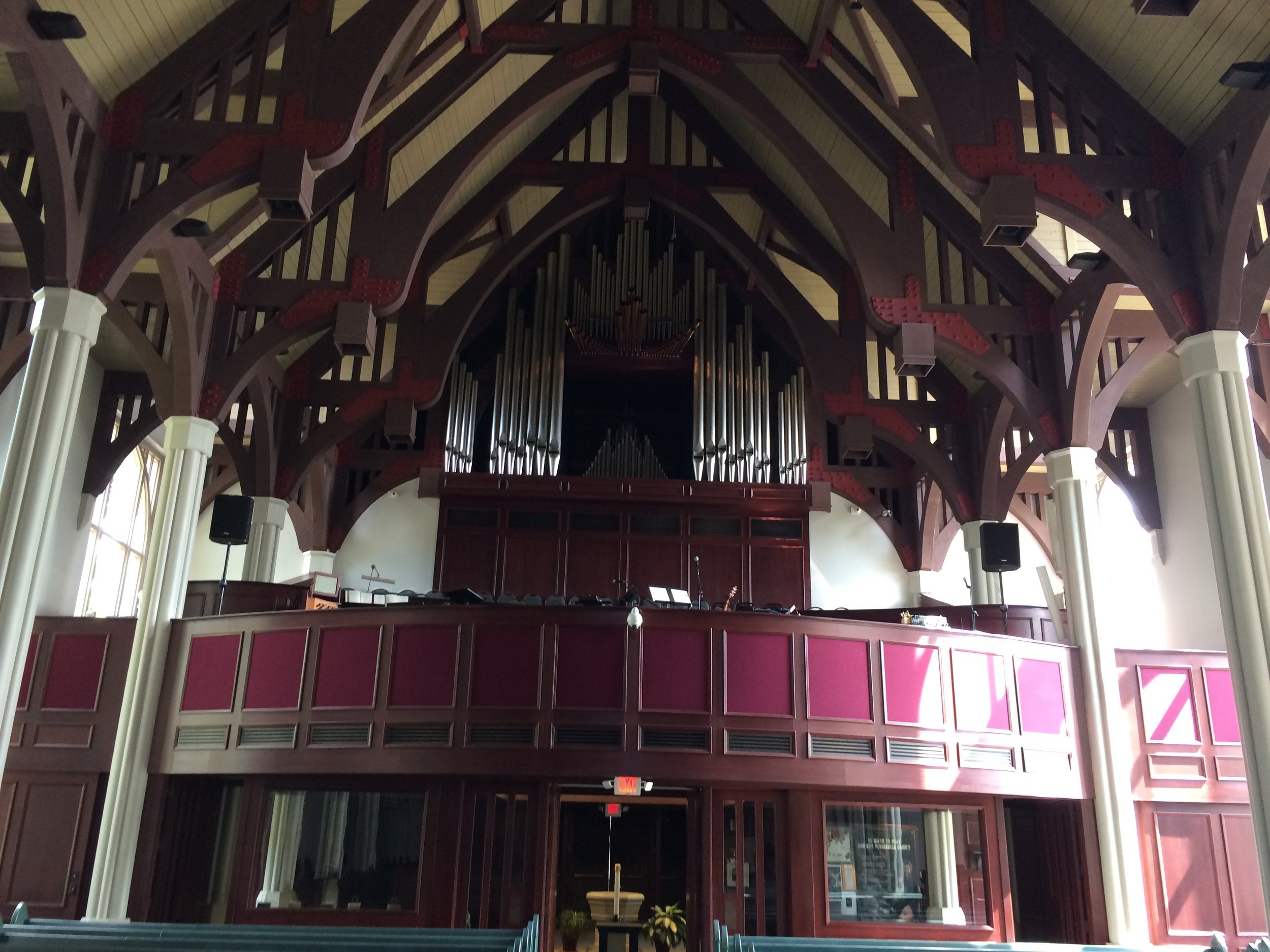The moment you set foot on the campus of Concordia Seminary, a massive statue of Martin Luther draws visitors and students alike into a sacred atmosphere. As an affiliated branch of the Lutheran Church Missouri Synod (LCMS), Concordia instructs students from around the nation to earn theological degrees and accreditations. Located in the "inner ring" suburb of Clayton, this seminary provides an environment where future leaders of the Lutheran Church can not only train to preach in the LCMS, but also commune with other theologians to enhance and embrace a strong sense of fellowship. This page explores the history of how Concordia Seminary came to be, describe its current state, and considers how it influences the religious culture of St. Louis.
The seminary was first founded in Perry County, Missouri before it eventually moved to the St. Louis area. In 1839, a group of German clergymen settled in the Missouri county and built a log cabin to perform their studies. Soon thereafter in 1849, the Seminary changed locations to a site on Jefferson Avenue in the downtown St. Louis area. Following the turn of the century in 1920, the current campus location was incorporated in Clayton, Missouri where the beautifully landscaped grounds attract citizens from the surrounding community. A replica of the original Perry County log cabin now exists on the current campus and is seen as a nostalgic sanctuary of the seminary’s history.
The current seminary campus in Clayton is comprised of various elements that provide a religious yet academic atmosphere. The Concordia Seminary Library, built in 1960, offers a large study space for divinity students to convene. The campus also contains dormitories, including the Founder’s Dorm, dubbed “Iso” because of its isolated location away from the quad. Concordia also boasts a 156ft tower, Luther Tower, with a Chapel of the Holy Apostles at its base. The bells of this tower are dedicated to all LCMS pastors and serves to solidify their memory. A replica statue dedicated to Martin Luther located at the entrance of the campus aides in reminding Lutherans of their roots in Worms, Germany, where Luther delivered his “Here I Stand” speech. Finally, the Chapel of St. Timothy and St. Titus serves as the place of daily worship, allowing future leaders of the Lutheran Church to practice preaching. The chapel itself takes form of a cross, and its ceiling that of a “vessel,” symbolizing the parishioners’ quest to build up the Church. This campus certainly showcases a university feel, both functionally and aesthetically pleasing, allowing students to work together to strengthen their faith and the Lutheran Church Missouri Synod.
An aspect of the seminary that holds sacred value to the city of St. Louis as well as the many LCMS affiliated churches and institutions located across the country is the education that individuals receive from the school. Hopeful pastors and deaconesses go through specific programs that instruct them on the Lutheran faith and the detailed guidelines of the Missouri Synod itself. The most recognizable degree that trains students hoping to become ordained pastors is the Master of Divinity program, or the M-Div. Having around 60 to 80 graduates of the program on a yearly basis, Concordia requires students who are earning their Master of Divinity to go through four years of education with one of those being a year of vicarage spent away from the school interning at an assigned church. Certain theological departments are structured in the seminary’s educational framework to focus on specific areas of religious study. These departments include Systematics (general spiritual studies), Exegetical (biblical interpretation), Practical (applied theology), and Historical. By helping educate the next generation of young pastoral leadership across St. Louis and the entire country, Concordia surely has an impact on the sacred, religiously rooted culture of the city.
Extending outside of solely religious education and interaction across the seminary, recreational activity is encouraged to help cultivate a fun and engaging atmosphere. These activities include numerous intramural sports, community events like Oktoberfest gatherings, and an exotic garden where students and members of the community are welcomed to come and enjoy. During a pleasant fall afternoon, it’s no surprise to see several kids playing soccer or frisbee on the beautifully landscaped lawn in front of campus. Small community outreach is also done through field work. During field work, pastors-in-training are sent out to designated parishes to work and train within the established community. Activities like these aid in creating an inviting culture and help represent just what the seminary’s mission to serve and reach out to others is all about.
As a true aspect of Sacred St. Louis, Concordia Seminary exemplifies multiple standards of spreading religious teachings and ideologies. It is a unique facility that trains students through Lutheran education to spread the word of Lutheranism nationwide. Being one of only two seminaries in the LCMS, Concordia allows for a higher concentration of followers within the St. Louis community. In accordance to this, Lutheranism and its teaching are spread throughout the St. Louis region. This is the perfect representation of what Sacred St. Louis means. Having a minority-majority sect of religious followers creates a distinctive community in St. Louis because a Lutheran-based education network is so rare in the United States. Lutheran teachings are found in the community from statements of the LCMS. In one statement made by the Lutheran Church in 2012, they begin to explain to the St. Louis community that “as followers of Christ we should also abide by the laws state from the government. As god-fearing people we should always remember to fulfill our civic duty but to never forget to answer to the (higher) court of Christianity.” The effects of having this small concentration of religious followers in a large population extends their teachings and ideologies into the majority of the community.
Content researched and written by Michael Barbercheck, Michael Dechering, Desmond Dolphy, Brady Lenius, Aaron Peach, and Elijah Suos.
Additional Sources:
Concordia Theological Seminary. "A Whole New Can Of Worms: A Statement Of The Faculty Of Concordia Theological Seminary On Religious Liberty." Concordia Theological Quarterly 76.1-2 (2012): 178-181. ATLA Religion Database with ATLASerials. Web. 24 Oct. 2016.
Hartung, Bruce. “Concordia Seminary Interview.” Personal Interview. 7 Oct. 2016.
Johnstone, Ronald L. The Effectiveness of Lutheran Elementary and Secondary Schools as Agencies of Christian Education; an Empirical Evaluation Study of the Impact of Lutheran Parochial Schools on the Beliefs, Attitudes, and Behavior of Lutheran Youth. St. Louis: School for Graduate Studies, Concordia Seminary, 1966. Print.
Meyer, Carl S. Log Cabin to Luther Tower: Concordia Seminary during One Hundred and Twenty-five Years toward a More Excellent Ministry 1839-1964. Saint Louis: Concordia House, 1965. Print.
Miller, James. "Concordia Seminary Interview." Personal interview. 14 Sept. 2016.

